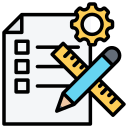Defining Exam Success: Outcomes That Matter
A strong program defines success with precise targets, such as IELTS 7.0 or CEFR B2, and shows how lesson objectives map to those benchmarks. Ask how often progress is measured, how thresholds are validated, and whether students actually reach required bands within realistic time frames.
Defining Exam Success: Outcomes That Matter
Programs that promise overnight jumps often trade genuine skill for test tricks. Look for balanced progress across reading, listening, speaking, and writing. Sustainable improvement shows up in mock trends, stable timing, and transferability to new tasks, not just repeated practice on familiar question types.


